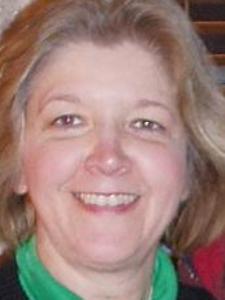

Featured Review:
We really like her
Anonymous, 31 lessons with EllenWe are grateful to have Ellen as my son’s tutor. My son (1st grader) is pretty shy and Ellen has been very patient and understanding. She knows how to work with kids very well and just the right way to encourage them, and was able to get my son to open up over time. My son enjoys her tutor sessions and has made big progress. I would definitely recommend her.
My name is Ellen and I am a retired Fairfax County Highly Qualified Teacher who has been teaching for over 30 years in both private and public school settings. During these thirty years, I have also served as a private tutor and have worked with elementary, high school, adults, and special education students. As an educator, I have had the opportunity to utilize various reading, math and technology programs.
I truly enjoy the advantage of teaching in a one-to-one setting and I feel that my...
Loading...
We really like her
We are grateful to have Ellen as my son’s tutor. My son (1st grader) is pretty shy and Ellen has been very patient and understanding. She knows how to work with kids very well and just the right way to encourage them, and was able to get my son to open up over time. My son enjoys her tutor sessions and has made big progress. I would definitely recommend her.
Anonymous, 31 lessons with Ellen
Knowledgable and patient tutor
Ms. Ellen is very nice and knowledgable tutor. My daughter has some issue with attention. Ms Ellen is very patient and friendly to teach my daughter how to take notes and how to make her study more interesting by combining her drawing interest into the note taking. My daughter usually doesn't like her tutor, but Ms. Ellen is an exception. Ms. Ellen really knows how to talk and how to listen to kids, and how to build a comformtable and trustable relationship with kids instead of just teaching them knowledge. She is more like a metor for kids. I think in some way, my daughter treats her like her grandma. It is hard to find a tutor who teaches by heart and Ms. Ellen is one of them.
Jane, 10 lessons with Ellen
Extremely experienced and patience Tutor
Ms. Ellen has a vast experience of teaching, encompassing both the public and private sectors. She dedicated a lot of time to discuss to understand the needs of our child. Her play-based class is really engaging and grabs the attention of the little ones! They learn while have fun!
Artur, 1 lesson with EllenTutor responded:Thank you so much for taking the time to write this review. I truly appreciate it!
Thank you
Thank you for your patience with Arnav. Arnav really enjoys learning fro you. He has shared positive feedback about the strategies you have shared with him.
Arathi, 11 lessons with Ellen
Patient and helpful tutor keeps things interesting
Ellen has done an amazing job helping my fourth grader. She keeps the sessions interesting by using different games and activities and is able to hold my son's attention for the entire session. My son can get easily distracted. Ellen is very patient with him and uses different techniques to keep him engaged in learning.
Kara, 8 lessons with Ellen
Knowledgeable and patient tutor
After getting to know my son, Ellen has began working with him to address his weaknesses. She is patient and gets along well with her students. She prepares thoroughly for each session and has helped my son immensely. I wholeheartedly recommend her to those who are looking for a tutor.
Stephen, 52 lessons with Ellen
Creative and Patient Tutor
The session was great, my son had a great experience. Ellen’s attention to my son’s needs and learning habits via games and various methodologies allowed my son to open up and enjoy learning during his session.
Veronica, 15 lessons with Ellen
Engaging and fast paced
She was great! My son usually is hesitant when it comes to readin and writing. He warmed up to ellen quickly! They worked on short vowels and consonants. Thank you, Ellen!
Kelly, 6 lessons with Ellen
Knowledgable & fun
Ellen is accessing where Liliana is so that she can help her become a more confident reader, writer, speller and student. Liliana likes Ellen's engaging personal approach to learning. She makes it fun.
Marlies, 4 lessons with Ellen
Helpful
Ellen did a great job helping me with a psychology lab assignment that was difficult to do. She was able to make each sentences clear and recommend words that have better flow in the page. Overall, I had a great session with her.
Mason, 32 lessons with Ellen